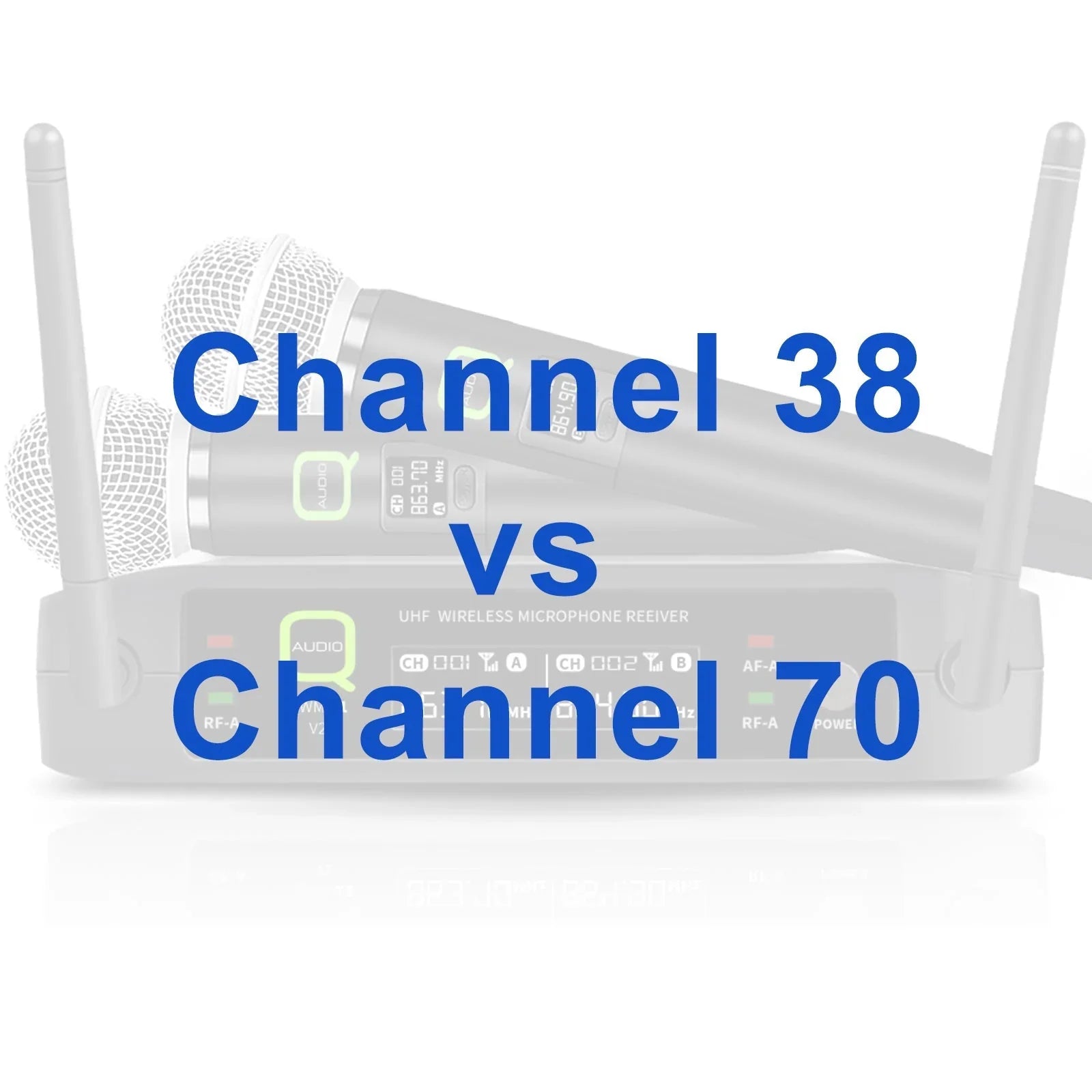When it comes to wireless microphones, one of the most important factors you’ll need to consider is the frequency at which they operate. In the UK, the two most commonly used frequency bands for wireless microphones are Channel 38 and Channel 70. While both offer excellent sound quality and reliability, there are some key differences between them, particularly when it comes to legal requirements and performance.
Let’s dive into what makes Channel 38 and Channel 70 wireless microphones unique, and why you might need a license for using Channel 38 in the UK.
What Are Channel 38 and Channel 70 Wireless Microphones? 📡
Wireless microphones work by transmitting sound via radio waves to a receiver, allowing performers to move freely without the constraint of wires. The frequencies at which these microphones operate are crucial because they determine the quality of the audio signal and how susceptible the signal is to interference from other devices.
-
Channel 38 is part of the UHF (Ultra High Frequency) spectrum, specifically between 606.500 to 613.500 MHz.
-
Channel 70 is within the VHF (Very High Frequency) range, and operates in the 863 MHz to 865 MHz band as well, but it is often subject to shared use.
Both channels are legal for use in the UK, but the key difference lies in the regulations governing their use.
Key Differences Between Channel 38 and Channel 70 Wireless Microphones 🎶
1. Licensing Requirements for Channel 38 🎟️
One of the most significant differences between Channel 38 and Channel 70 is that Channel 38 requires a license for its use in the UK. This is due to the fact that this frequency is licensed for professional use, and the government regulates who can operate devices in this band. Here's what you need to know:
-
Channel 38 Wireless Microphones: To legally use a wireless microphone operating on Channel 38, you will need to apply for a wireless microphone license from the UK’s communications regulator, Ofcom. This license grants you permission to use the frequency without interference from other radio users.
Why a License is Needed:
Channel 38 operates in a more regulated part of the spectrum and is often used for professional audio equipment, such as those found in theatres, concert venues, TV broadcasts, and events. The license ensures that users comply with government rules and that there is no interference from competing signals.-
Cost of License: The cost of the license can vary based on the duration and type of event, but it’s generally required for professional-grade equipment.
-
Frequency Coordination: The license ensures that the frequencies used do not conflict with other devices in the area, making it a safer and more reliable option for high-profile events and performances.
-
2. Channel 70 and Its No-License Status 📡
In contrast, Channel 70 is available for use without a license. This makes it an attractive option for those who want to use a wireless microphone for smaller-scale events, home studios, or amateur performances.
-
Channel 70 Wireless Microphones: These microphones are designed for lower-powered use, and they do not require a license for personal or non-commercial use in the UK. They are perfect for smaller venues, such as weddings, karaoke parties, or home recording studios.
Pros of Channel 70:
-
No License Needed: You can legally use these microphones without the need to go through the licensing process.
-
Affordable Option: Wireless microphones operating on Channel 70 tend to be more affordable because of the lack of regulatory overhead.
-
Ease of Use: The plug-and-play nature of Channel 70 makes it a convenient choice for users who may not need to navigate licensing requirements.
-
3. Signal Range and Interference 📡
While both channels offer high-quality sound, there are differences in signal strength and interference potential:
-
Channel 38 tends to have a more robust signal, and its licensed status reduces the chance of interference, especially in crowded environments like festivals or large venues.
-
Channel 70 operates in a less regulated environment, which can result in more interference from other devices that use the same frequency band. It’s important to consider this when using Channel 70 in busy areas or large public events.
Which One Should You Choose? 🤔
Choosing between Channel 38 and Channel 70 largely depends on the type of event you’re hosting or the scale of your setup:
-
Channel 38 is best for professional events that demand high-quality sound without the risk of interference. If you’re working at large-scale performances, theatre productions, or broadcasting, it’s worth applying for the Channel 38 license to ensure optimal performance.
-
Channel 70, on the other hand, is ideal for smaller events, amateur performers, or home studio setups. Its easy accessibility without the need for a license makes it a great choice for those who don’t want the hassle of paperwork or extra costs.
Why Does Licensing Matter for Channel 38? 📝
The need for a license for Channel 38 ensures that wireless microphone users have exclusive access to this frequency band. This reduces the risk of interference from other radio devices, which is crucial for maintaining audio clarity during professional events. If you're planning on using wireless microphones for any large-scale performances or public events, securing a license for Channel 38 is essential.
Conclusion: Channel 38 vs. Channel 70 📡
In summary, Channel 38 and Channel 70 both serve their purpose in the world of wireless microphones, but each has specific advantages depending on the use case. If you’re working in a professional setting where sound quality and reliability are paramount, Channel 38 is the way to go—but remember to apply for a license! If you’re running smaller events or personal projects, Channel 70 provides a hassle-free, affordable option that still delivers great sound.
No matter which channel you choose, ensure you're complying with UK regulations and enjoying interference-free, high-quality audio!

